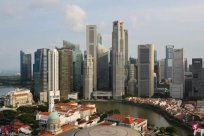The former Deputy Director of the National Bureau of Statistics, He Yan, said at the China Real Economic Development Conference in 2023 that the real estate supply is now overpashing, and 1.4 billion people may not be able to live.Qiu Baoxing, deputy minister of the Ministry of Construction, said at the China City High -quality Development Think Tank Forum in 2022 that the vacancy rate of housing has reached 15%, and some provinces have reached 25%or even 30%.
The annual test of the Chinese Population Census 2020 shows that the per capita residential area of Chinese households reaches 41.76 square meters.It seems that not many people feel that they live so well.
Nevertheless, 1.4 billion people are not easy to live in excess real estate, but coexist with structural shortage and structural excess.
In the era of high economic growth from 1980 to 2010, 600 million Chinese people (exceeding the entire population of the European Union, and also surpassed the country's population of the United States, Japan, the United Kingdom, Canada, and Australia) from the countryside.However, many cities in China, especially first -tier cities, have a restriction on the movement of the population.There is no job opportunity in my hometown. Although I work in the city, I have no sense of belonging.The city cannot accommodate the soul, and the hometown cannot be settled.Therefore, working in the city and building a house and buying a house in the hometown is the choice of most people.The relocation of the population has caused a large number of villages to become empty villages, as well as houses in a large number of towns and villages, but people live in the past few days of the Chinese New Year.Most of the time, many people rented in a small space by themselves, but the average "41.76 square meters" was idle.
Houses in the city are limited to buy, rural houses are limited to sale, people's free flow and uncomfortable flow of real estate leads to mismatch with real estate resources, and the efficiency of resource utilization is extremely low.In the past two years, a large number of mines and difficulties in housing companies are a manifestation of this kind of resource mismatch and low resource utilization efficiency.
The high cost brought by China's complex land real estate rights has a long history, especially in rural homesteads and collective land related to it.If the city is unlimited, people in the city have the right to sell their houses and land to the city, to farmers, and mortgage to banks; farmers have no right to sell their houses to the farmers in the city or non -village.There is no right to (more accurate to say "impossible"), when the shortage of funds is mortgaged to financial institutions to obtain a loan.
When farmers have no right to transfer land and real estate, financial institutions will not accept mortgage financial business of farmers 'land and real estate, and farmers cannot use these fixed assets to obtain liquidity, and farmers' loans will naturally occur.Farmers' rights in land and real estate are essentially deprived.
Power, non -trading; rights must be tradable; otherwise, the rights of citizens are actually bureaucratic power.
Urbanization is the general trend. In countries with more than medium income today, the top 20 cities are more than 50%of the country's population.After urbanization, there will be a "big urbanization" process.East Asia is particularly obvious.
The Tokyo Metropolitan Circle has 42 million people, accounting for more than 30%of the Japanese population, and accounting for more than 50%of Japan's GDP (GDP). This is also the efficiency of division of labor brought about by the concentrated population.The population of the Seoul Metropolis has exceeded one -third of the Korean population.The population of Taipei Economic Circle (Taipei, New Taipei, Taoyuan, and Hsinchu) also exceeds one -third of the population of Taiwan.
China needs to improve the free liquidity of real estate and cancel the purchase restriction policy of cities and rural housing in order to effectively improve the efficiency of housing nationwide.In 2021, the top 15 of the number of retirees in the United States moved in, none of them were big cities.Retirers in large cities sell their houses to small cities and rural pensions, increasing the supply of housing in large cities, and inhibiting rising house prices in large cities and reducing the vacancy rate of rural housing.
The author is a professor at the School of Economics Management of Beijing Jiaotong University


